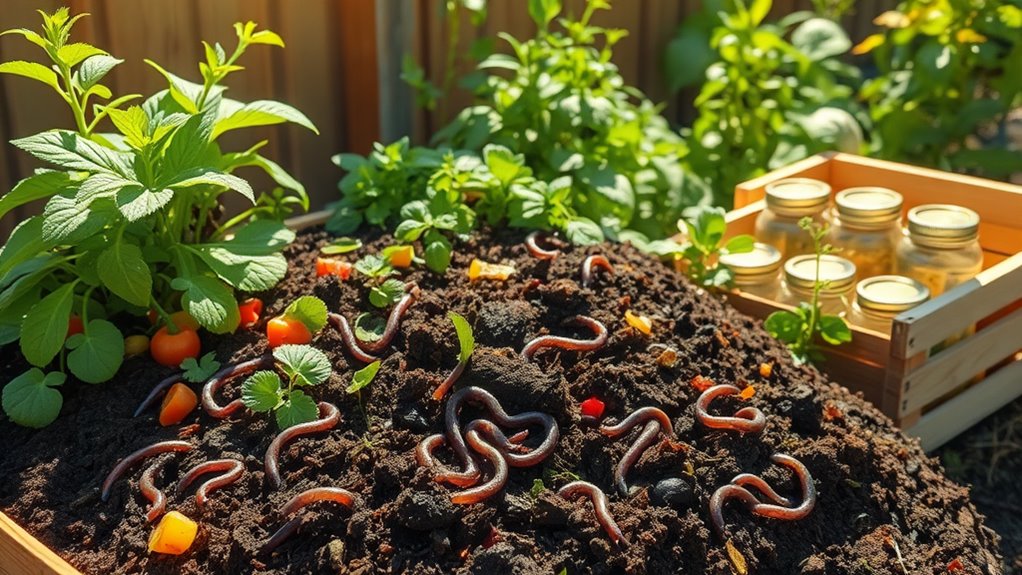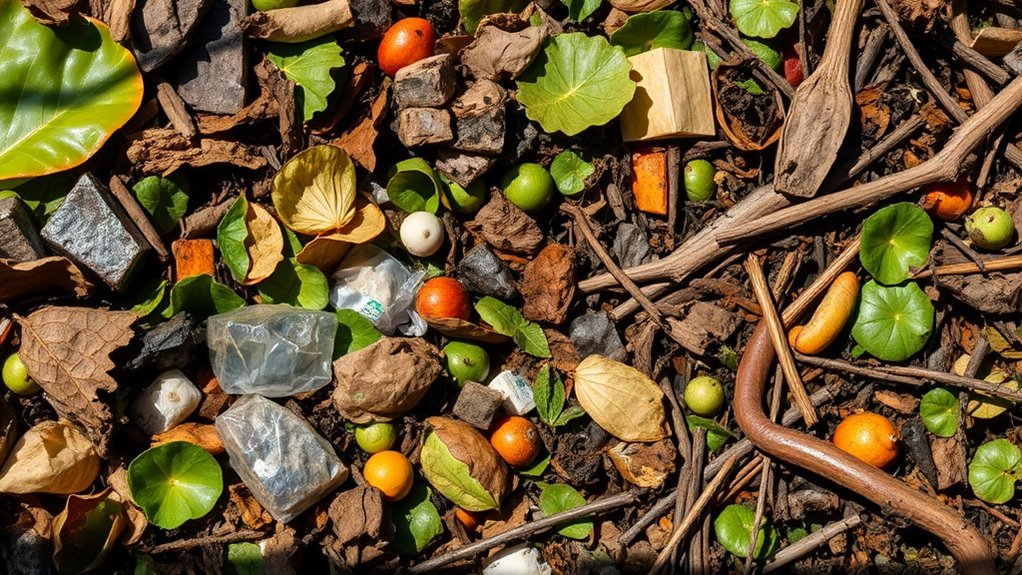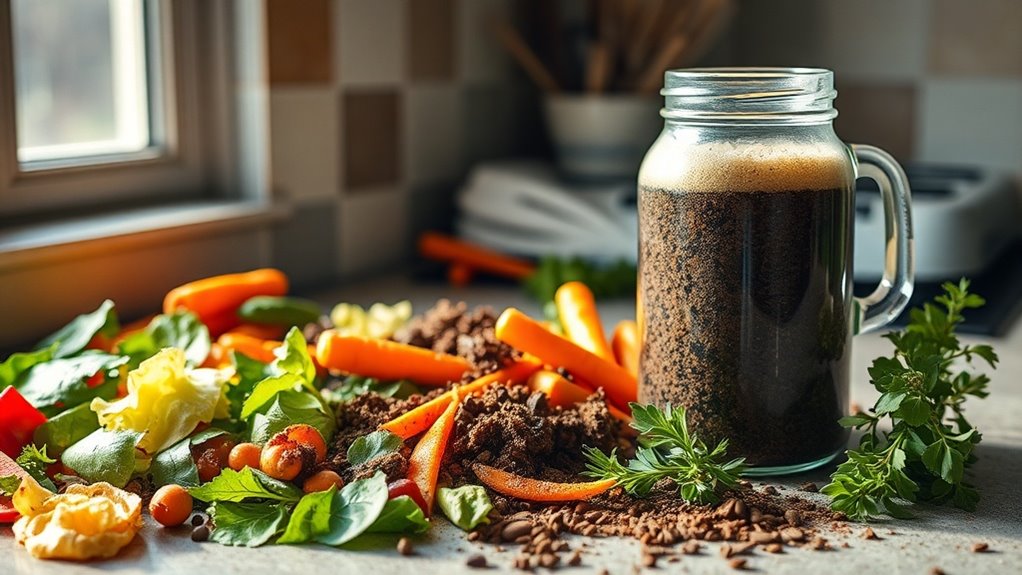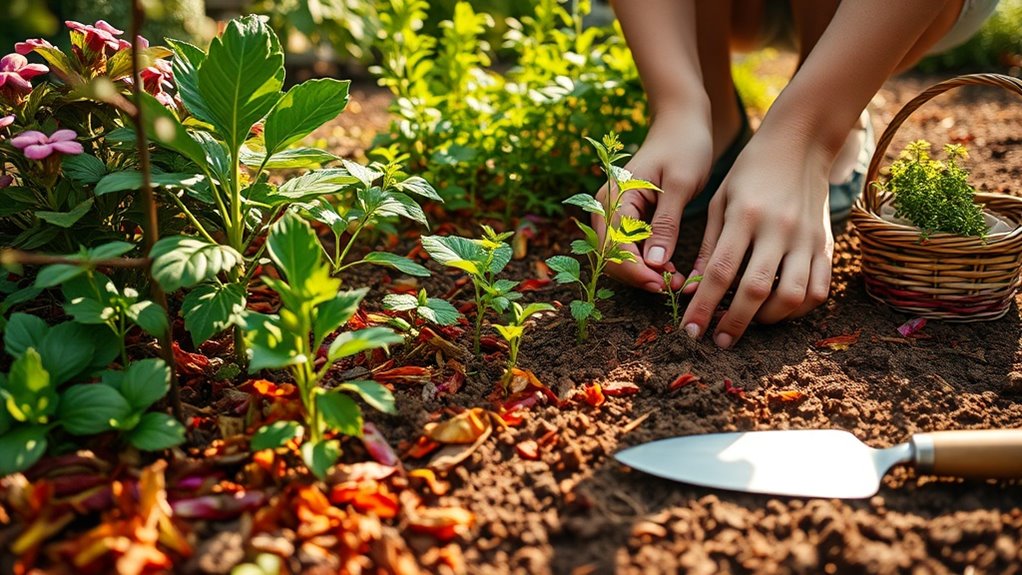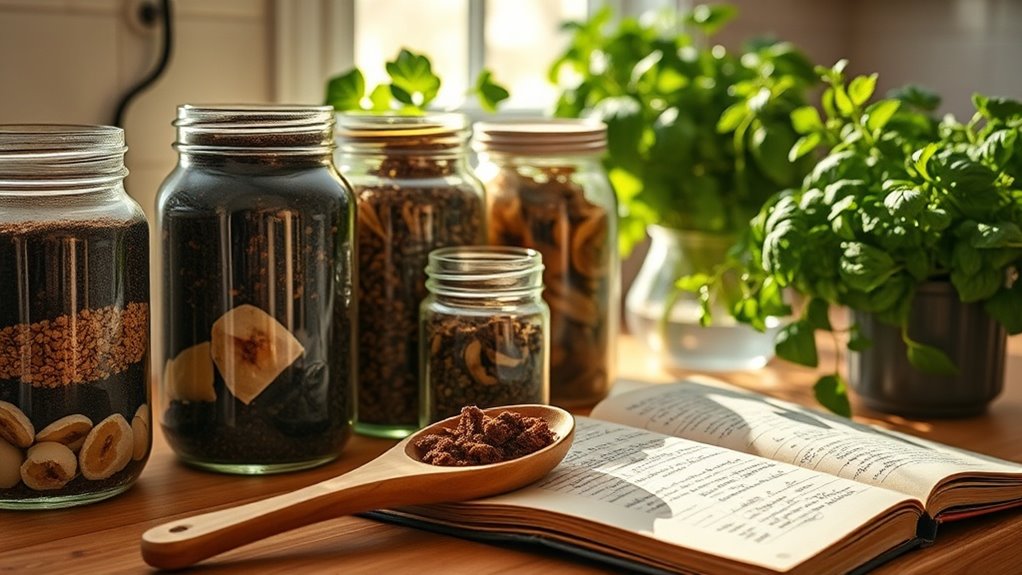Composting Doesn’t Have to Be Gross-Here’s How to Do It Right
Composting might seem daunting, but it doesn’t have to be a messy affair. With the right approach, you can turn your kitchen scraps into valuable soil without the unpleasant odors or pests. By understanding the basics and selecting the right method, you can make composting a seamless part of your routine. Curious about how to start and what materials to use? Let’s explore the steps to make composting a clean and rewarding experience.
Key Takeaways
- Collect only fruit, vegetable scraps, eggshells, and yard trimmings to avoid unpleasant odors and pests.
- Balance green materials like kitchen scraps with brown materials such as dried leaves for optimal composting.
- Turn your compost regularly to aerate it, which speeds up decomposition and prevents bad smells.
- Utilize a countertop composter or worm bin if space is limited, making composting manageable and odor-free.
- Keep compost damp, but not soggy, to ensure efficient breakdown and maintain a pleasant environment.
Understanding the Basics of Composting
Have you ever wondered how composting can transform your kitchen scraps and yard waste into nutrient-rich soil?
With easy composting, you can turn organic waste into black gold for your garden.
Start by collecting fruits, veggies, eggshells, and yard trimmings, avoiding meat and dairy to keep odors at bay.
Layer green materials, like grass clippings, with brown materials, like dried leaves, to maintain balance.
Keep your compost aerated by turning it regularly, and watch as microorganisms break down the matter.
In no time, you’ll have rich compost to boost your plants’ growth while reducing landfill waste. Maintaining proper balance is crucial for successful composting.
It’s a win-win for you and the environment!
Choosing the Right Composting Method
Which composting method suits your lifestyle best?
If you have limited space, consider a worm bin or countertop composter.
They’re compact and efficient for kitchen scraps.
For those with more room, a traditional outdoor bin or pile allows for larger quantities and quicker decomposition.
If you want minimal maintenance, try a tumbling composter; it aerates itself!
Additionally, if you live in a colder climate, a hot composting method can speed up the process.
Composting in urban spaces allows you to create nutrient-rich soil despite living in limited areas.
Choose based on your available space, time commitment, and desired end product.
The right method makes composting enjoyable and effective for you!
What to Compost and What to Avoid
Composting can transform your kitchen and yard waste into nutrient-rich soil, but knowing what to include and what to exclude is essential for success. Here’s a quick guide to help you:
| What to Compost | What to Avoid |
|---|---|
| Fruit and vegetable scraps | Meat and dairy products |
| Coffee grounds and filters | Oily or greasy foods |
| Grass clippings | Diseased plants |
| Eggshells | Plastic and metals |
Additionally, many people are surprised to learn that common household items like paper towels and cardboard can also be composted, as long as they are free from harmful chemicals.
Maintaining the Perfect Balance: Green vs. Brown Materials
To create rich compost, you need to strike the right balance between green and brown materials.
Green materials, like kitchen scraps and grass clippings, provide nitrogen, while brown materials, like dried leaves and cardboard, add carbon.
Aim for a ratio of about 2:1 greens to browns for optimal decomposition and nutrient-rich results. Additionally, incorporating odor-free composting techniques can further enhance the process and eliminate unpleasant smells.
Understanding Green Materials
While you might be eager to start your composting journey, understanding green materials is crucial for creating nutrient-rich compost.
Green materials provide nitrogen, which helps microorganisms break down organic matter.
Here’s what you should focus on:
- Kitchen scraps like fruit and vegetable peels
- Fresh grass clippings from your yard
- Coffee grounds, which add both nitrogen and texture
- Plant trimmings that are still green
Balancing these greens with brown materials ensures your compost heats up and decomposes efficiently.
Identifying Brown Materials
Brown materials are the backbone of a successful compost pile, providing essential carbon that balances the nitrogen from green materials. Identifying the right brown materials is key to creating nutrient-rich compost. Here’s a quick guide to help you:
| Type of Brown Material | Examples | Carbon-to-Nitrogen Ratio |
|---|---|---|
| Dry Leaves | Maple, Oak | 30:1 |
| Straw | Wheat, Barley | 80:1 |
| Cardboard | Shredded Boxes | 350:1 |
| Wood Chips | Pine, Cedar | 400:1 |
Incorporate these into your compost, and you’ll see great results!
Achieving Ideal Ratios
How can you ensure your compost pile thrives?
Achieving the right balance between green and brown materials is crucial.
Aim for a mix of 1 part greens (nitrogen-rich) to 3 parts browns (carbon-rich).
Here’s what you need to remember:
- Greens: Vegetable scraps, coffee grounds, grass clippings
- Browns: Dry leaves, cardboard, straw
- Moisture: Keep it damp but not soggy
- Aeration: Turn your pile regularly for oxygen flow
Maintaining this ideal ratio helps speed up decomposition, reduces odors, and produces nutrient-rich compost.
With a little effort, you’ll create a thriving compost pile that benefits your garden!
Troubleshooting Common Composting Issues
Composting can sometimes feel like a delicate dance, and even the most seasoned gardeners encounter issues along the way.
If your compost pile smells bad, it might be too wet or lacking oxygen—just turn it and add dry materials.
If it’s not breaking down, you may need to adjust the carbon-to-nitrogen ratio; toss in some greens or browns.
Pests? Keep fruit scraps covered and balance your materials.
And if it’s taking too long, remember that turning the pile regularly speeds up decomposition. Additionally, incorporating methods to accelerate compost decomposition can help you achieve rich, nutrient-dense compost in a shorter time.
Tools and Accessories for Successful Composting
To compost successfully, you’ll need the right tools and accessories to simplify the process.
From choosing the best compost bin to having essential items on hand, these choices can make a big difference in your composting journey. Building a compact compost bin can help you easily fit composting into any corner of your home or garden.
Let’s explore what you need to turn your kitchen scraps and yard waste into nutrient-rich soil!
Essential Composting Tools
Embarking on your composting journey becomes much easier with the right tools at your side.
Investing in essential composting tools not only simplifies the process but also makes it enjoyable.
Here are four must-have items you’ll want to consider:
- Compost Bin: A designated space for your organic waste.
- Pitchfork or Shovel: For turning and aerating your compost.
- Thermometer: To monitor the compost temperature and ensure optimal breakdown.
- Gloves: Protect your hands while handling materials.
These tools will help you create nutrient-rich compost efficiently and effortlessly, leading to a thriving garden and reduced waste.
Happy composting!
Compost Bin Options
Choosing the right compost bin can significantly impact your composting success.
You’ve got options that cater to your needs and space.
If you’re tight on room, a compact tumbling composter offers speed and efficiency, allowing easy mixing.
For larger gardens, a traditional open bin or a compost bin with a lid can handle more material and keep pests at bay.
Consider a worm bin if you’re keen on vermicomposting; it’s perfect for kitchens!
Whatever you choose, ensure it has good ventilation and accessibility.
With the right bin, you’ll turn kitchen scraps into rich compost in no time!
Helpful Accessories List
What tools and accessories can elevate your composting game?
Investing in the right gear makes composting easier and more effective.
Here’s a quick list of essentials that’ll help you succeed:
- Compost Aerator: This handy tool turns your pile and adds oxygen, speeding up decomposition.
- Kitchen Compost Bin: Keep scraps handy with a stylish, odor-free bin for easy collection.
- Thermometer: Monitor your compost’s temperature to ensure it’s cooking properly.
- Shovel or Pitchfork: These tools make turning and mixing your compost a breeze.
With these accessories, you’ll be on your way to rich, nutritious compost in no time!
Using Your Finished Compost Effectively
Once you’ve nurtured your compost to perfection, it’s time to put it to good use in your garden or landscape. Incorporating compost enriches your soil, boosts plant growth, and improves moisture retention. Here are some effective ways to use your finished compost:
| Application | Benefits |
|---|---|
| Garden Beds | Enhances soil structure |
| Potted Plants | Provides nutrients |
| Lawn Topdressing | Improves grass health |
Spread it evenly, mix it in, or simply layer it on top. Your plants will thrive, and you’ll enjoy the fruits of your labor. Additionally, using compost tea can further enhance plant growth and provide an extra boost of nutrients. Happy gardening!

